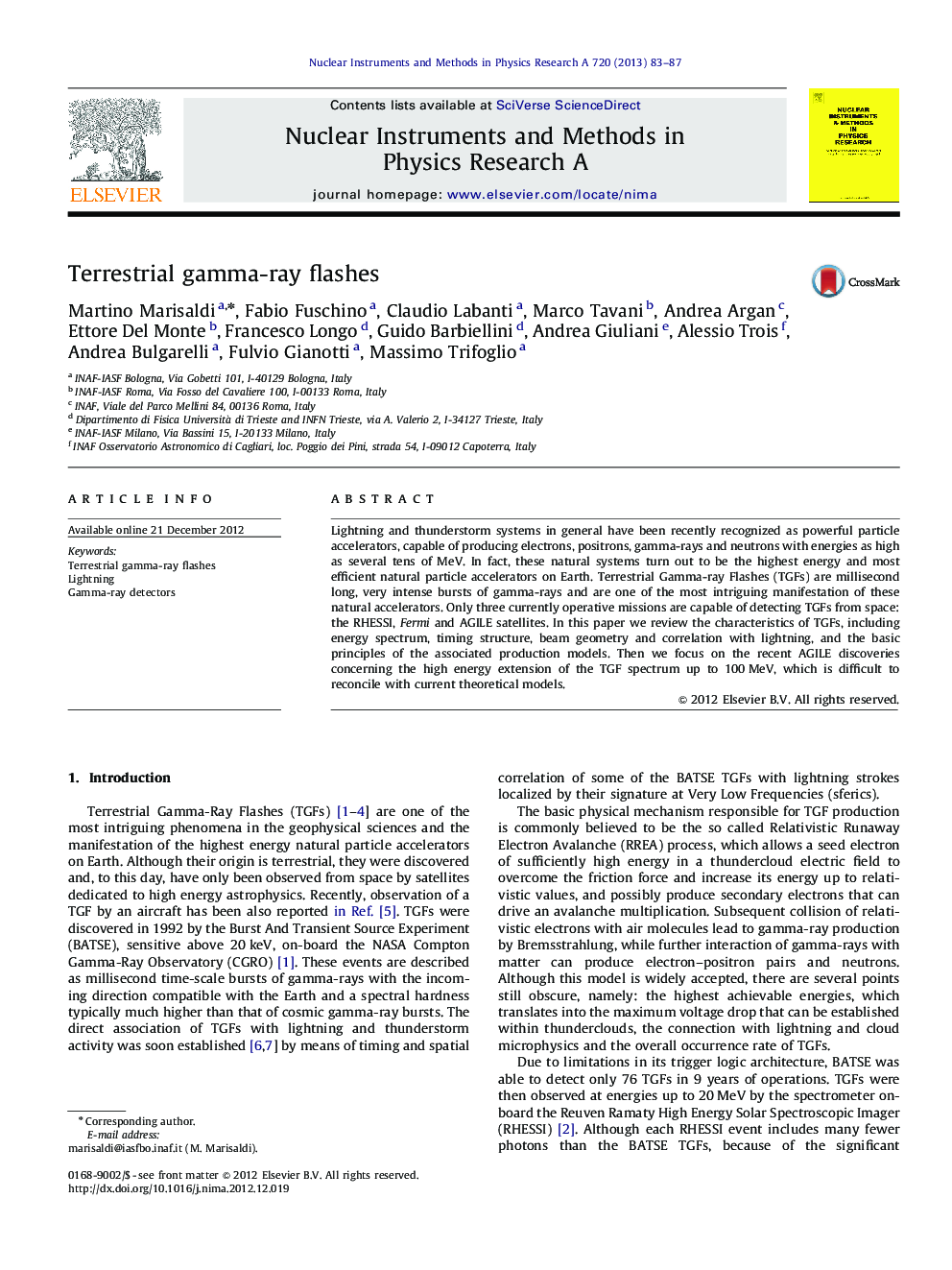| Article ID | Journal | Published Year | Pages | File Type |
|---|---|---|---|---|
| 1822944 | Nuclear Instruments and Methods in Physics Research Section A: Accelerators, Spectrometers, Detectors and Associated Equipment | 2013 | 5 Pages |
Lightning and thunderstorm systems in general have been recently recognized as powerful particle accelerators, capable of producing electrons, positrons, gamma-rays and neutrons with energies as high as several tens of MeV. In fact, these natural systems turn out to be the highest energy and most efficient natural particle accelerators on Earth. Terrestrial Gamma-ray Flashes (TGFs) are millisecond long, very intense bursts of gamma-rays and are one of the most intriguing manifestation of these natural accelerators. Only three currently operative missions are capable of detecting TGFs from space: the RHESSI, Fermi and AGILE satellites. In this paper we review the characteristics of TGFs, including energy spectrum, timing structure, beam geometry and correlation with lightning, and the basic principles of the associated production models. Then we focus on the recent AGILE discoveries concerning the high energy extension of the TGF spectrum up to 100 MeV, which is difficult to reconcile with current theoretical models.
